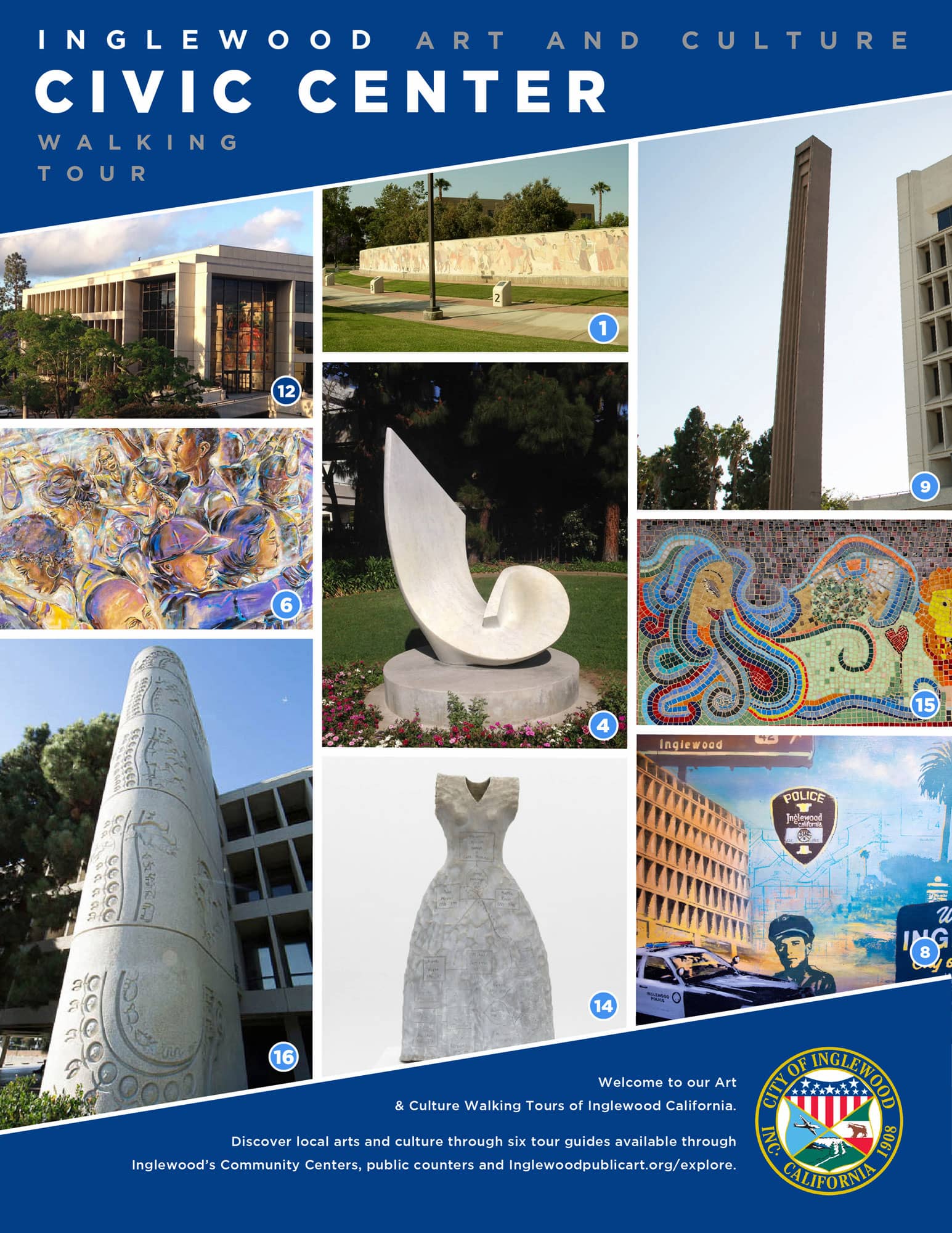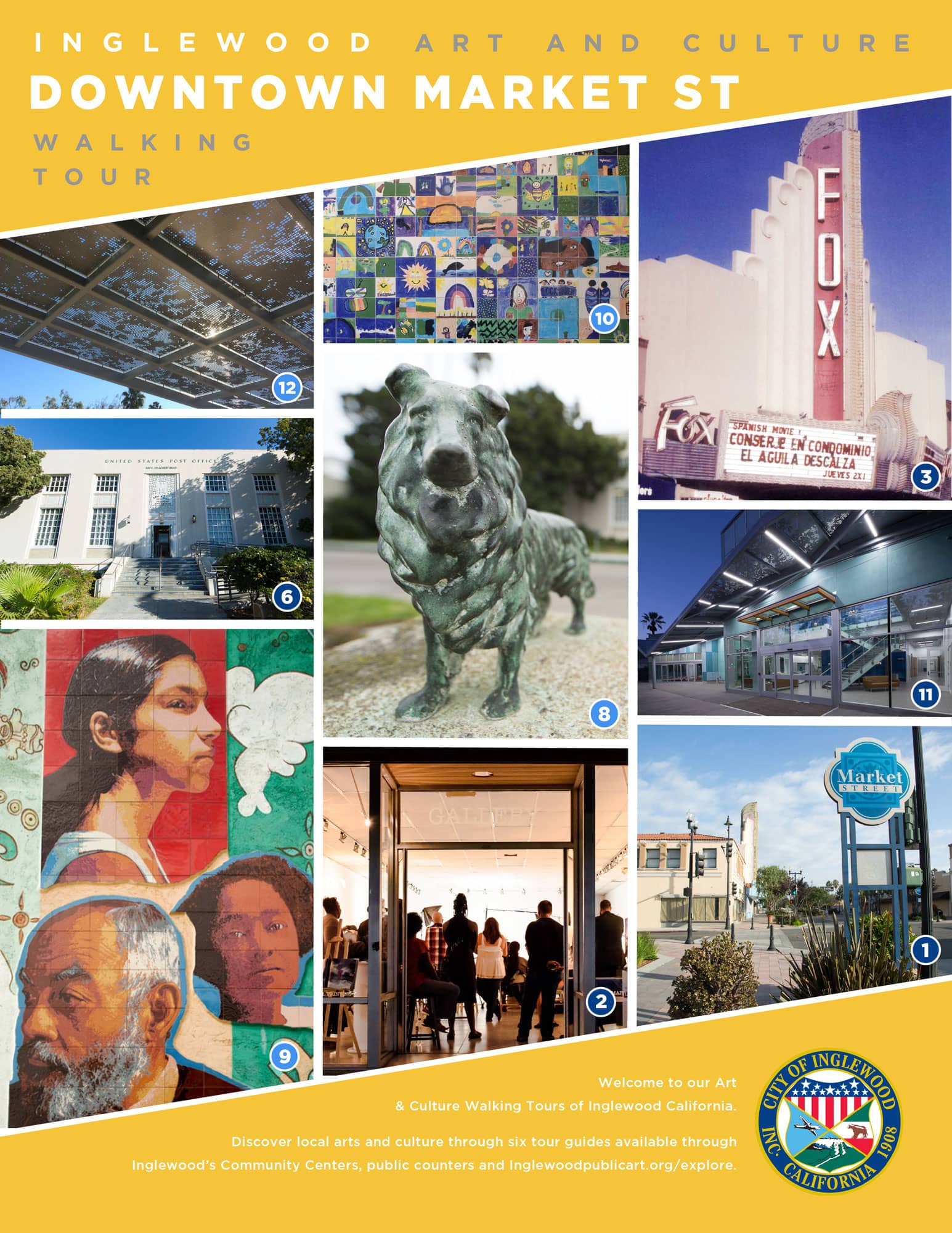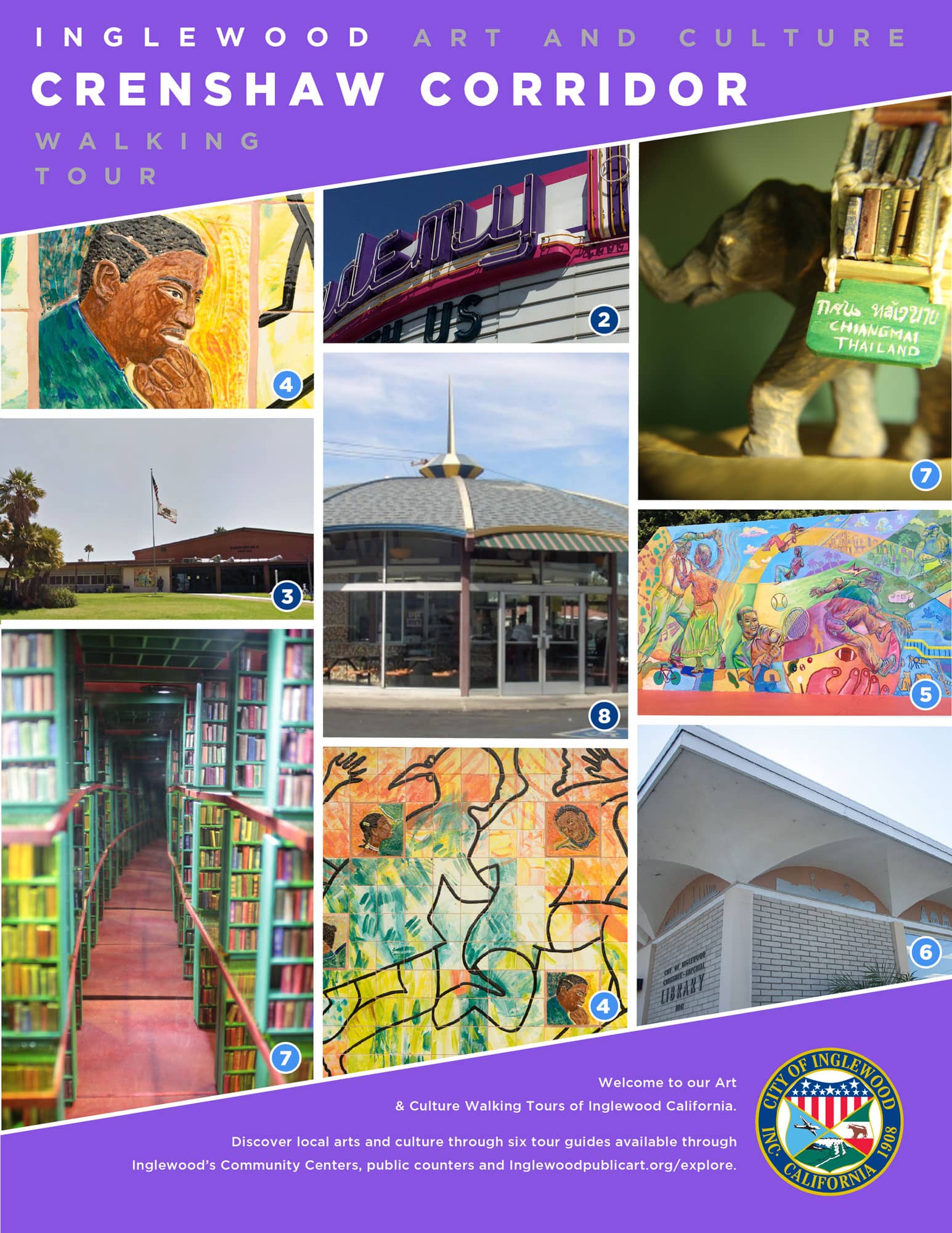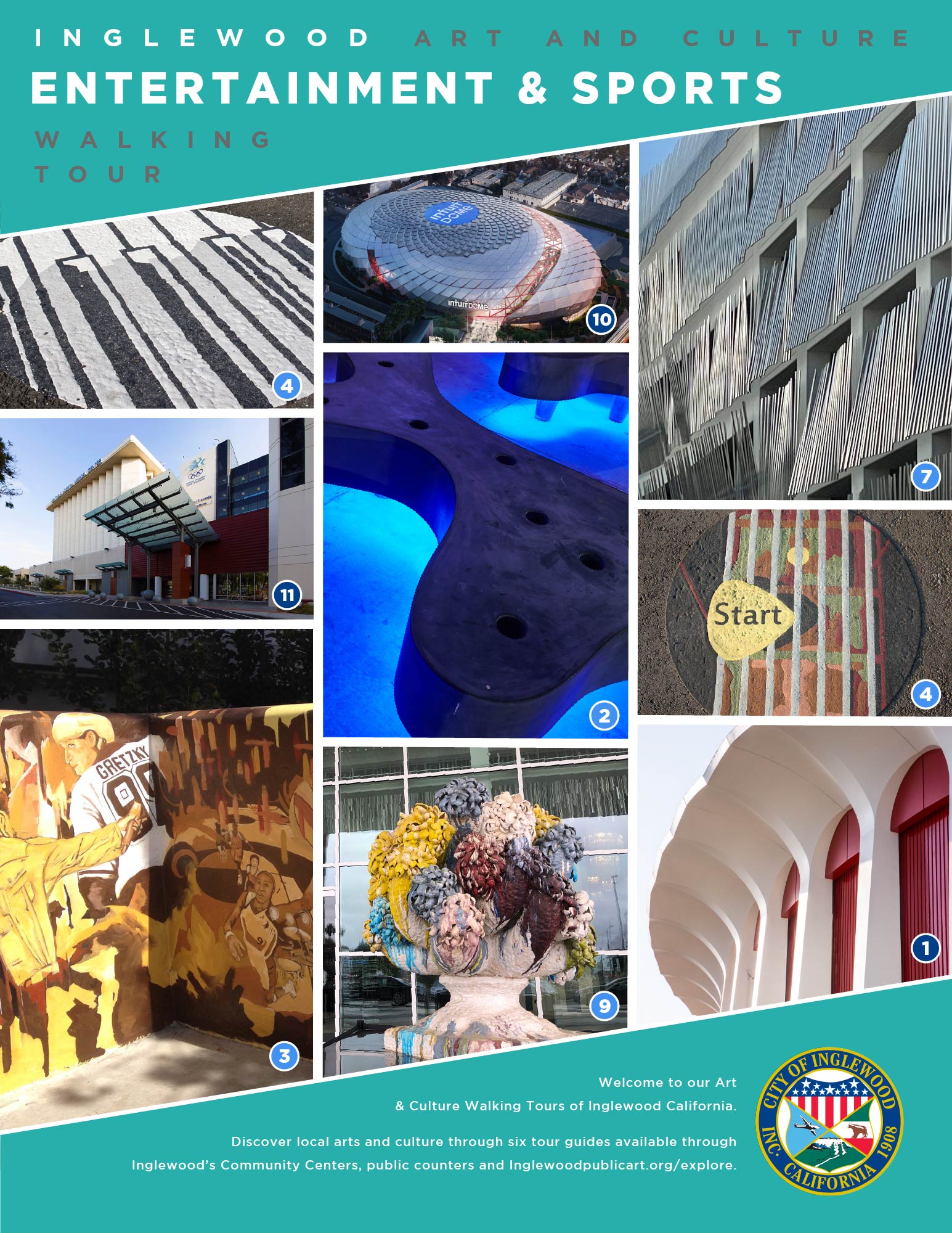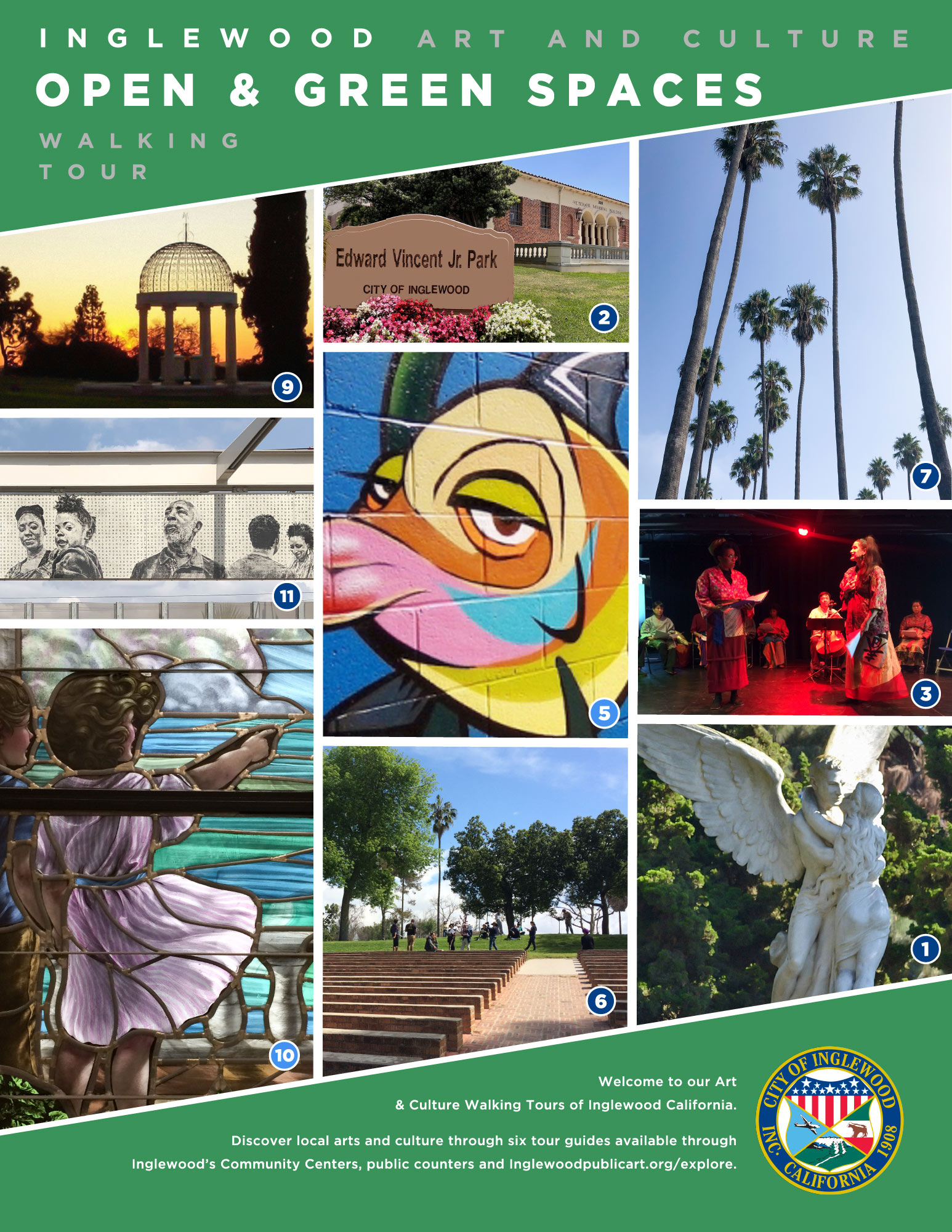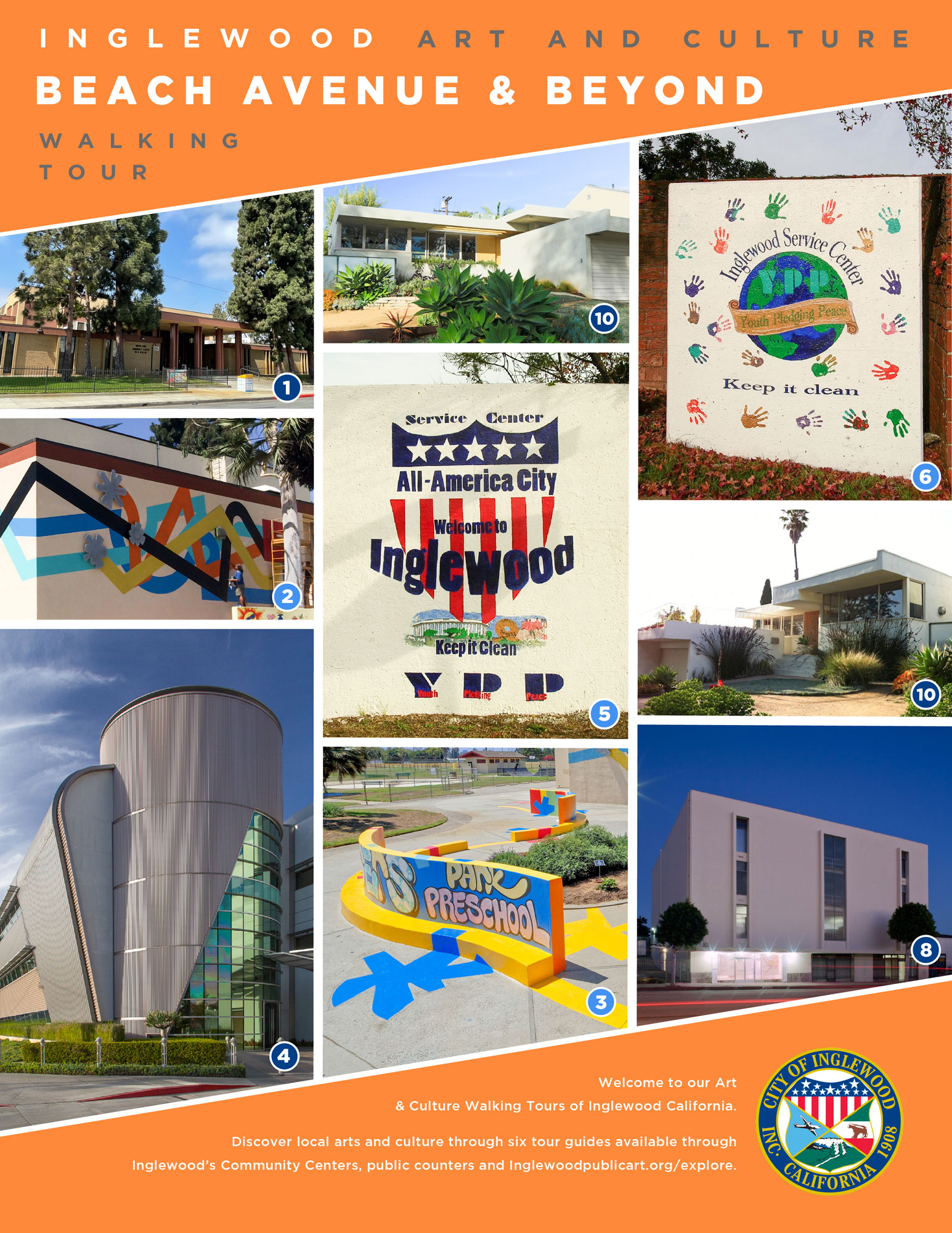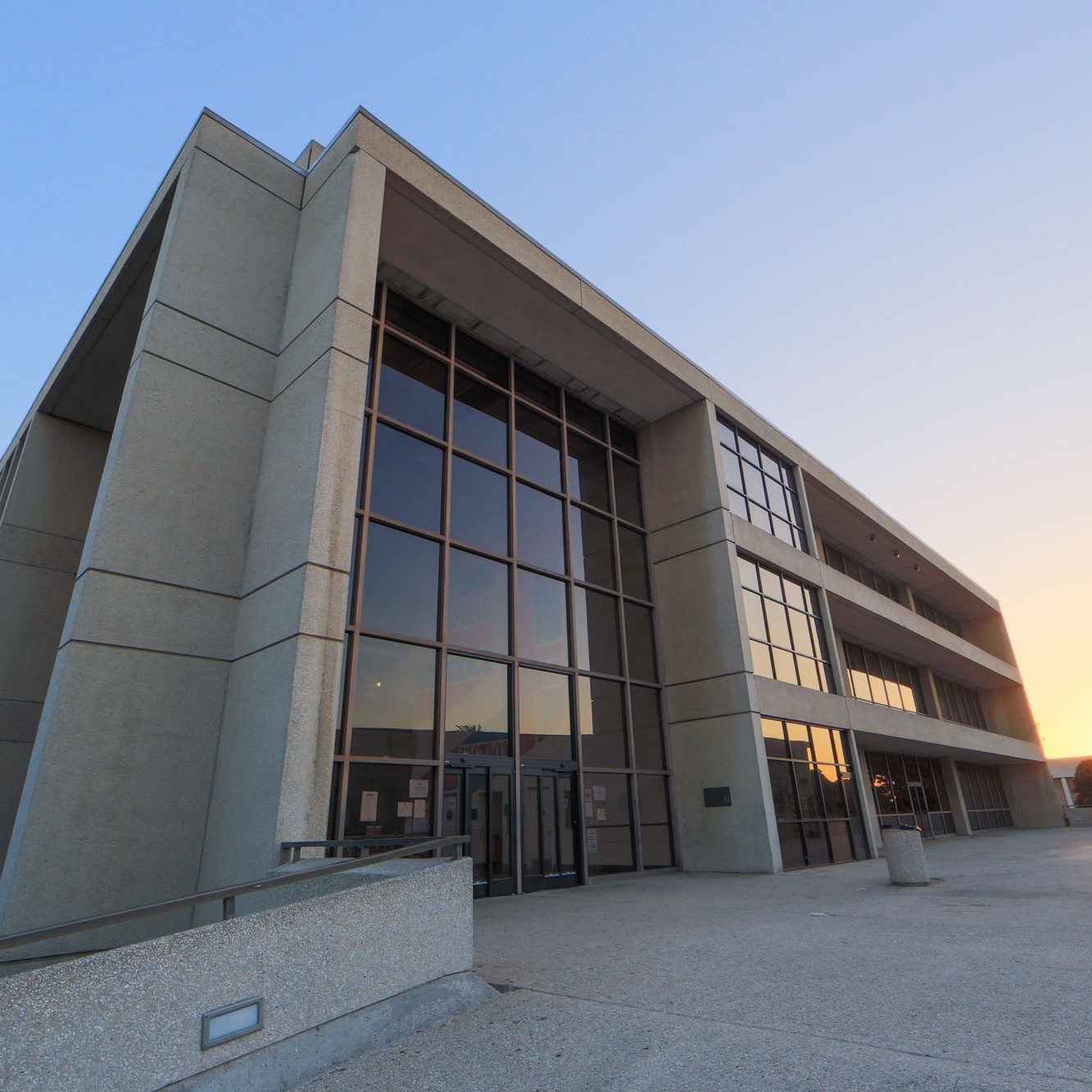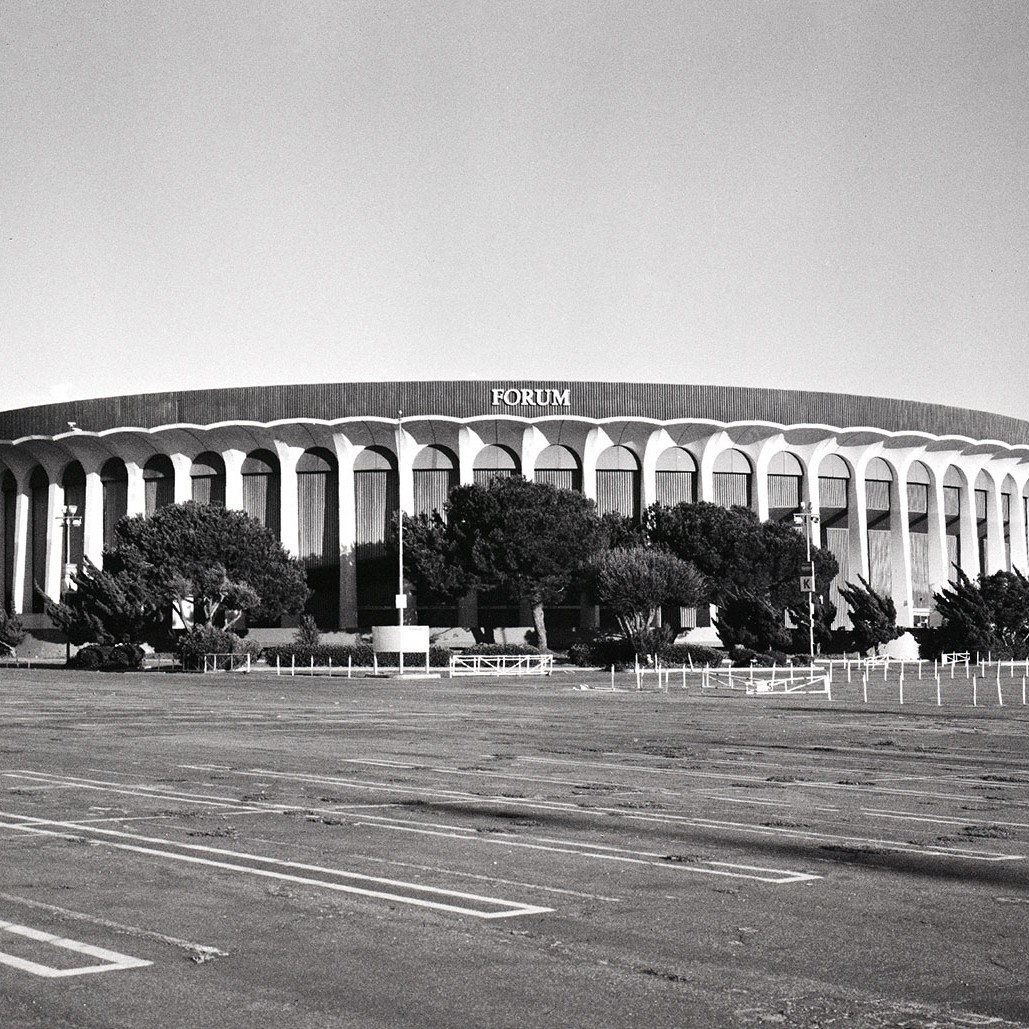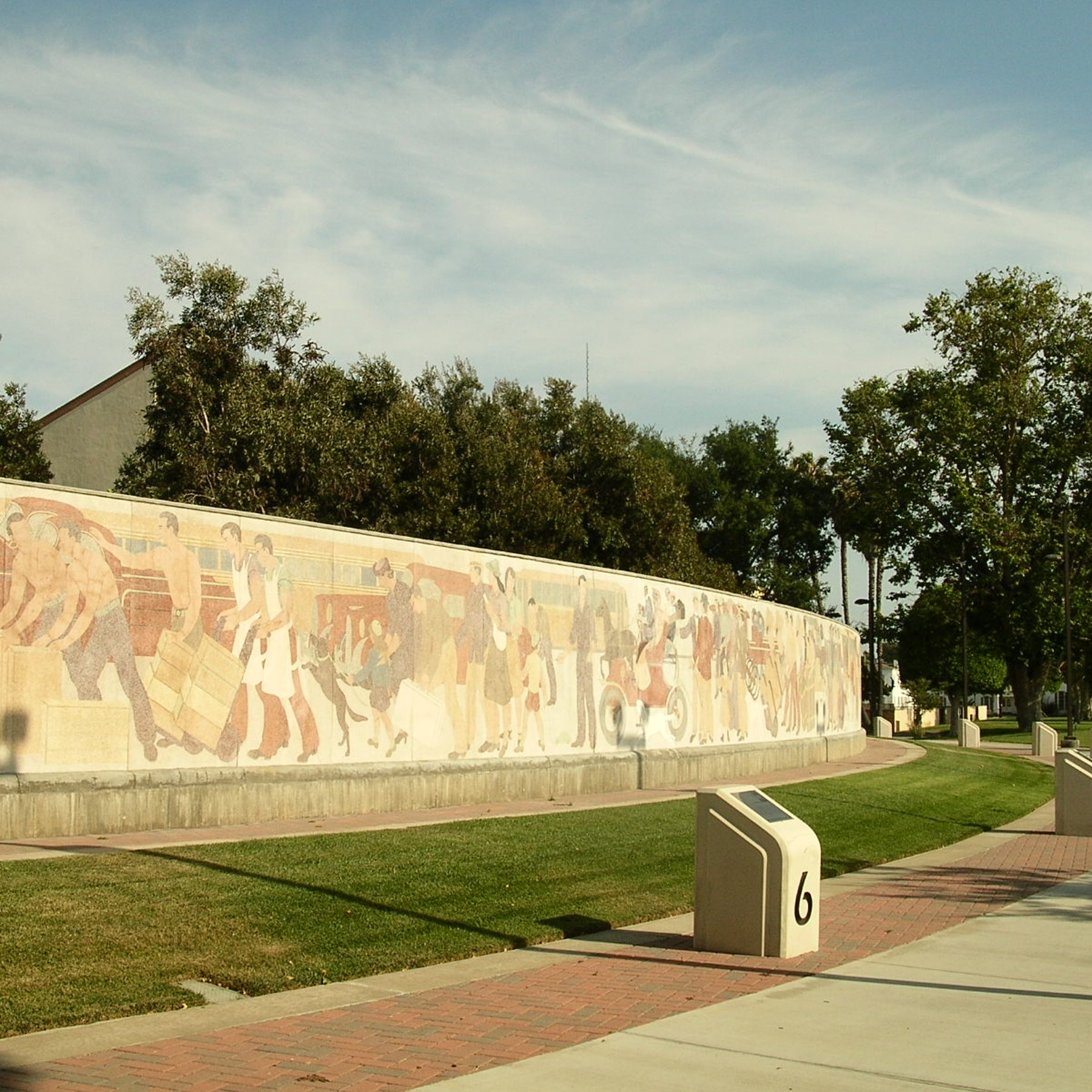Inglewood residents and visitors will always find something new in our energetic City. We invite you to explore:
- Inglewood Arts and Culture Walking Tours: six one-hour mapped tours, arranged by proximity to highlight public art, architecture and engaging attractions throughout the City.
- Inglewood Guided Tours: three city-wide tours curated by specialized subject matter.
Arts and Culture Walking Tours
Guided Tours
Inglewood’s rich history begins with the Centinela Springs. Access to its fresh water of the aquifer allowed the Centinela Valley to be developed for farming and settlement.
The Centinela Adobe, the first formal structure erected, was built in 1834 by Ygnacio Machado. A son of one of the soldiers protecting the first Mexican settlers on their way to Los Angeles, Machado brought settlement to the area. The larger ranchos, Rancho Sausal Redondo (22,000 acres) and Rancho Aguaje de la Centinela (2,500 acres) were bought by Sir Robert Burnett of Scotland. He leased and later sold both to Canadian Daniel Freeman who called the combined ranchos ‘The Centinela’.
Freeman moved to this area after reading Charles Nordhoff’s California for Health, Pleasure and Residence: A Book for Travelers and Settlers. He thought the cool breezes would benefit his wife’s poor health. His vast dry farming empire shipped barley bushels by the millions from his wharf at Playa del Rey.
Inglewood was the first settlement carved from the 25,000 acre Centinela Ranch in 1888 shortly after a railroad station had been built in the area. The combined ranchos encompassed today’s cities of Lawndale, Hawthorne, El Segundo, Manhattan Beach, Hermosa Beach, and part of Redondo Beach as well as parts of Los Angeles County and City of Los Angeles. The boundaries of these ranchos are just south of Marina del Rey to Redondo Beach Blvd in Redondo Beach and Van Ness Ave on the east to the Pacific Ocean.
The new town of 300 residents immediately opened a school, in a livery stable, until a school building could be erected. First day was May 21 of that same year and 33 students were enrolled. Town politics also began in 1888 when F.B. Mitchell was appointed deputy county clerk and A.M. Rollins was sworn in as deputy sheriff after the town’s ornamental cannon had been blown to bits in a prank.
Chinchillas & The 1920 Earthquake
In 1905, Inglewood recovered from a nationwide financial crash by establishing a Poultry Colony in the present North Inglewood. Before it folded during the Great Depression in 1934, the Poultry Colony occupied one quarter of the city and hatched poultry enterprises across Los Angeles.
That same year, Inglewood Park Cemetery, among the oldest in Los Angeles County, was developed by Archie Freeman, Daniel’s son. Coffins and mourners travelled the street car line in specially designed vehicles. The Cemetery’s original gates faced what is now Florence Avenue.
On February 14, 1908 Inglewood, with a booming 1,200 population, was incorporated as a city. But a 1920 earthquake put it on the map. People came to see the damage and stayed for the wonderful climate. From 1920 to 1925, Inglewood was the fastest growing city in the United States. In 1923 Inglewood was again in the forefront as Chinchilla Capital of the world. M. F. Chapman from the Peruvian Andes started a national industry.
Aviation, Hollywood Park Racetrack, WWII
Inglewood’s Air Age began in 1927. Lindbergh’s famous transatlantic flight in May 1927 convinced local leaders of the need for a municipal airport. The Andrew Bennett Ranch was leased by the City of Los Angeles and converted into Mines Field (later LAX). Charles Lindbergh flew the first passenger plane in with Will Rogers as a passenger. The National Air Races were initiated here in 1928 with Lindbergh as one of the flyers.
When the Marathon Race of the 1932 Olympics came through Inglewood, our nickname, the “City of Champions”, began. Inglewood High School alumni Hector Dyer, Frank Booth and George Jefferson were Olympics winners, respectively, in track, water polo and pole vault events.
In 1938, Hollywood moguls led by Jack Warner built the Hollywood Park Racetrack on South Prairie Avenue. It became a magnet for celebrities, ordinary people, and bums.
Inglewood had been the hub of an agricultural area. The Inglewood High School Farm at Kelso and Inglewood Avenue was an important part of the academic curriculum until World War II. Street names in southwest Inglewood carry the names of fruit and nut trees in remembrance of the groves in the city. Defense industries transformed the orchards into an industrial community. The war effort brought new workers and their families to the city.
Defense efforts continued into the Cold War. The national Space and Missile Systems program was undertaken in 1954 when the U.S. Air Force established the Western Development Division in the former St. John’s Chrysostom Catholic School at Manchester Boulevard and Locust Street. A team of military engineers and scientists developed the Atlas missile – the country’s first Intercontinental Ballistic Missile system.
The Forum & The New Civic Center
During the 1960s and 1970s, Inglewood grew and developed a metropolitan look. The City became racially integrated in its residential, government, and business communities. It boasted major hospitals: the Centinela Valley and Daniel Freeman. The Forum was constructed in the late ’60s as home court for the Los Angeles Lakers basketball and the Los Angeles Kings hockey teams. It also hosted the Los Angeles Strings team tennis franchise and championship boxing bouts.
During this time Inglewood’s added high-rise buildings seen on today’s skyline. The first was the Civic Center complex, constructed as a joint effort by the City and County of Los Angeles and dedicated in 1973. The Civic Center contains the City Hall, Police and Fire headquarters, the main public library, County Courts and Health facilities.
Achieving our civic centennial in 2008, Inglewood continues to grow. Our cultural spaces and workers inspire our residents, businesses and visitors alike.
In the first quarter of the 21st century Inglewood has attracted diverse investments in arts, design and public and private services. Neighborhood bike trails, regional light rail, national design firms and international sports arenas contribute to the city’s reputation as a great place to live, work and play.
With a population of more than 110,000 residents of diverse cultures and backgrounds, Inglewood is the thriving center of an ever-changing Centinela Valley. From our founder’s historic adobe to our cultural communities, landmark architecture, and exciting public art, Inglewood’s arts and cultures inform our bright future as the most exciting small city in Los Angeles County.

